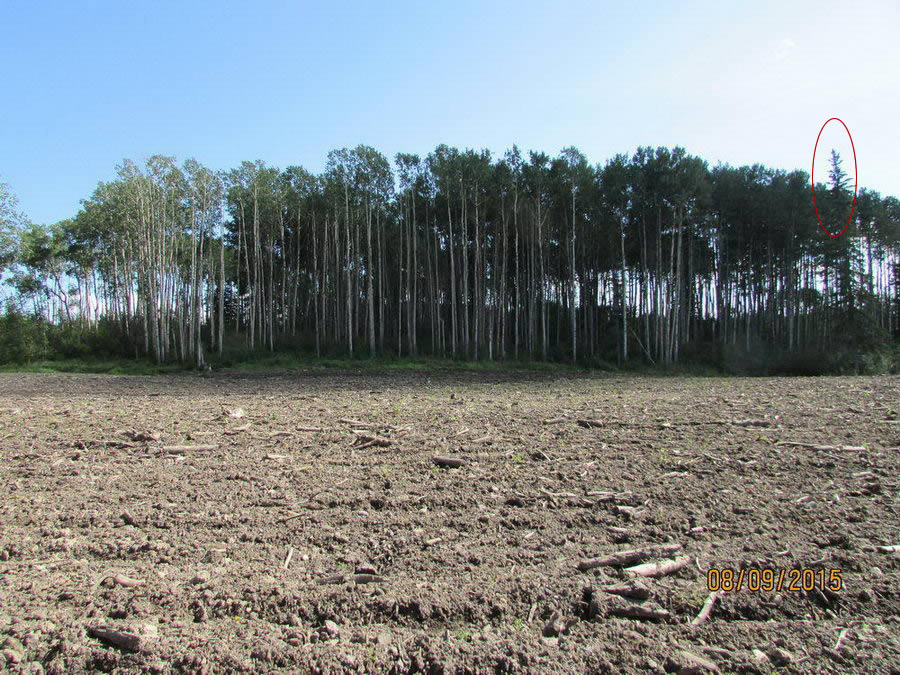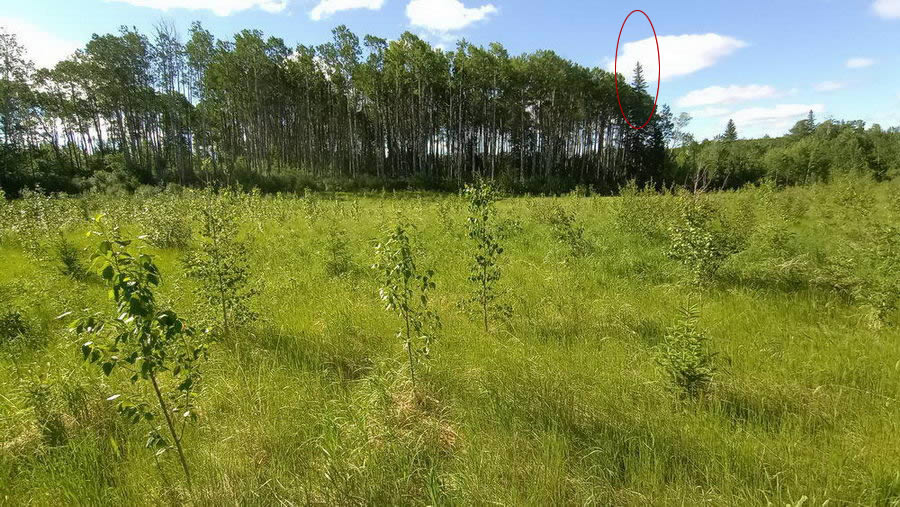A Quick Fix & the Surprise
Proper reclamation of the boreal forest is rarely a quick fix. In fact, the best outcomes take time if they are ecologically aligned, industry-leading, regulatory approved, and socially acceptable. That’s a tall order to deliver. It’s one that demands program-supporting projects that are well thought out, properly executed, and based upon a clear understanding of the dependencies an effective remedy recommendation will require. And that’s why Reclaimit consultants rarely pull the quick fix tool from their suite of solutions to restore a disturbed forestland site. The quick-fix solution is high risk. Yes, high risk.

Notice the tall spruce tree in the top right of the photo as a reference point in both before and after photos.
How is a quick-fix solution high risk?
Well, it’s the quick fix that hides an assortment of shortcuts. That beeline to the finish, when truly understood, has baggage that includes a variety of long-term and debt-laden commitments. Like the outcomes arising from a quick-fix solution applied by another service team on a Reclaimit project site in 2015. Within days of Reclaimit completing a well-planned and executed reforestation solution, the other service company then implemented an intentional seeding of the reclaimed site using a seemingly less expensive native grass seed mixture to save on costs. Sounds great, right? After all, the seed and its application were cheap to source and apply, and savings are always good.

Notice the tall spruce tree in the top right of the photo as a reference point in both before and after photos.
As seen in July 2021, the grasses are well established, making the site completely green. And they complement Reclaimit’s suite of ecologically aligned native plants; that Boreal forest-friendly mixture of Picea glauca (white spruce), Populus balsamifera (balsam poplar), Betula papyrifera (white birch), Alnus viridis (green alder) and Salix spp. So, what’s the issue?
Well, Reclaimit’s original solution would have met the reclamation criteria for plant diversity, coverage, and health by the end of 2017. A mere 2 years after treatment. Meeting that benchmark would have meant that the liability would have been considered addressed, eligible for return to the regulator, and fully ending the proponent’s financial and environmental responsibilities at the location. The application by another service provider never should have occurred on this lot, however, due to a lack of internal communication in the company that contracted Reclaimit, one of the stakeholders in the company made a judgement call that they thought would save on costs.
SURPRISE! The Quick-fix solution actually costs more.
As luck would have it, during the application of the native grass seed mixture, a few tiny weed seeds that found their way into that seed lot also became established. And now they need to be controlled annually until eliminated for the location to be considered eligible for a liability release.
Although the applied seed was likely certified, this applies only to genetic purity and has nothing to do with the presence or absence of weed seed in an applied mix. “Canada No. 1” or “certified seed”. – only guarantees the variety (genetic) purity, – but NOT that the seed is weed-free!!!. REFERENCE: https://www.alberta.ca/assets/documents/aep-weed-awareness.pdf (SLIDE #31)
So, a return in 2022 to respray the site is on the books, and if successful will make the site release-ready in 2023, a full 8 years after the quick fix. And if not, another spray project will be on the books.
Thinking beyond the quick fix, it’s how Reclaimit consultants practice forestland reclamation and successfully deliver ecologically compatible and financially justifiable solutions. Have a question about my blog articles, reclamation services, or any forestry-related questions? Click here to drop me an email!
Did you like this article? You may also like our approach to forestland reclamation that targets Wildlife Habitat Restoration.





